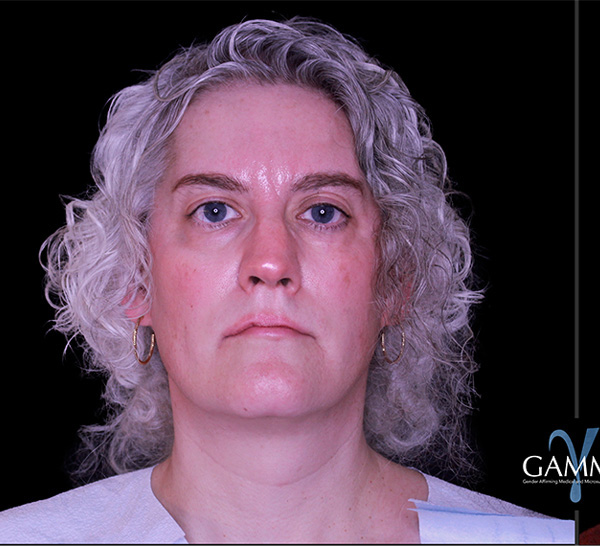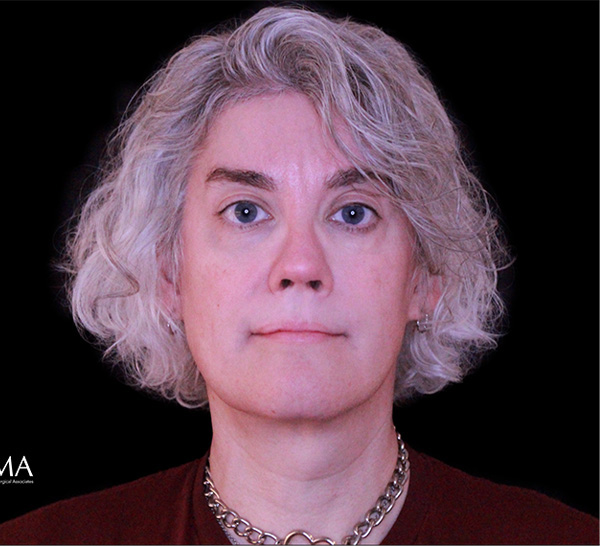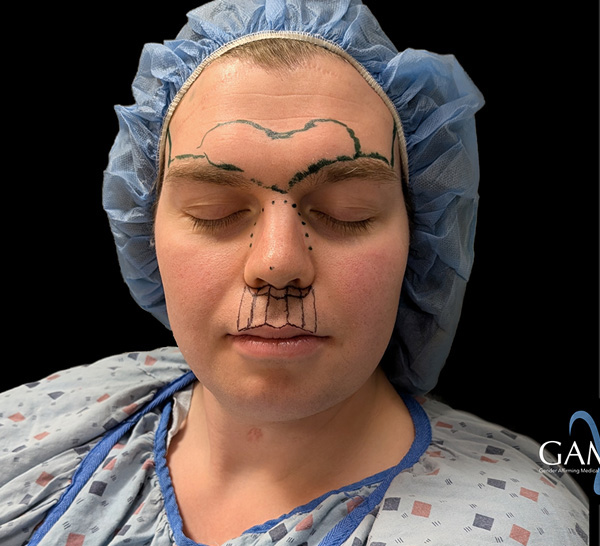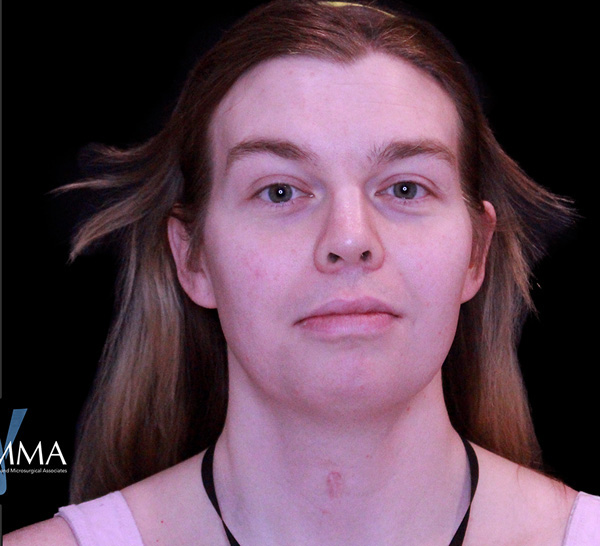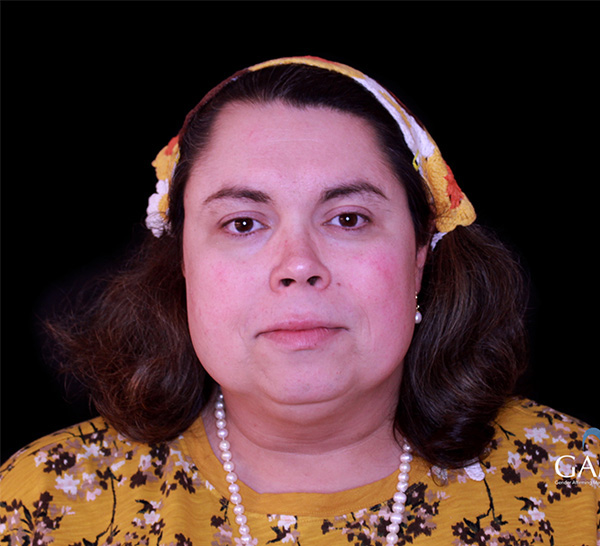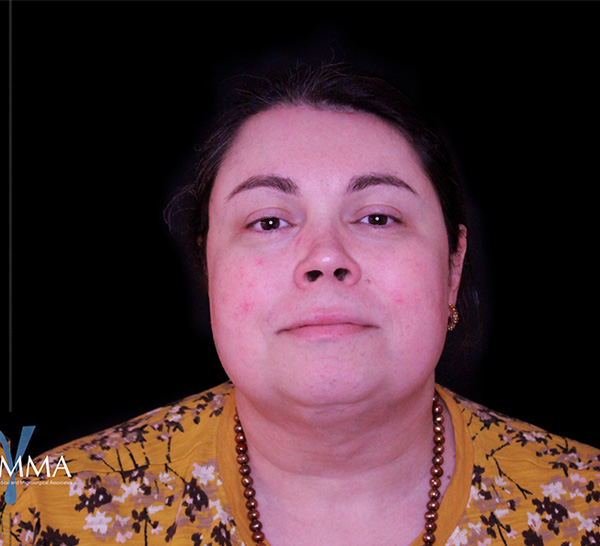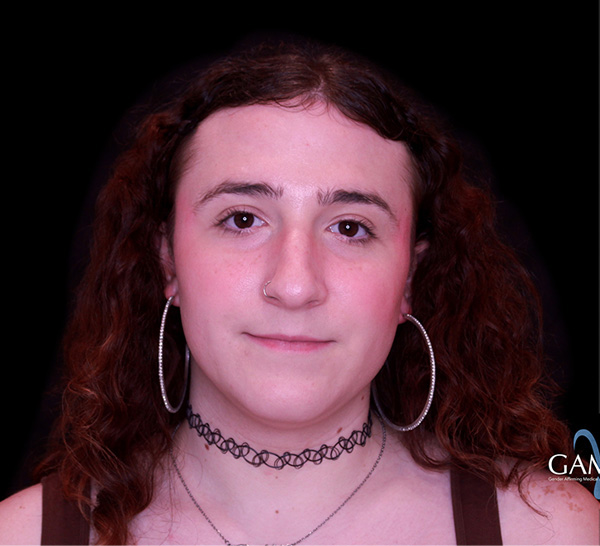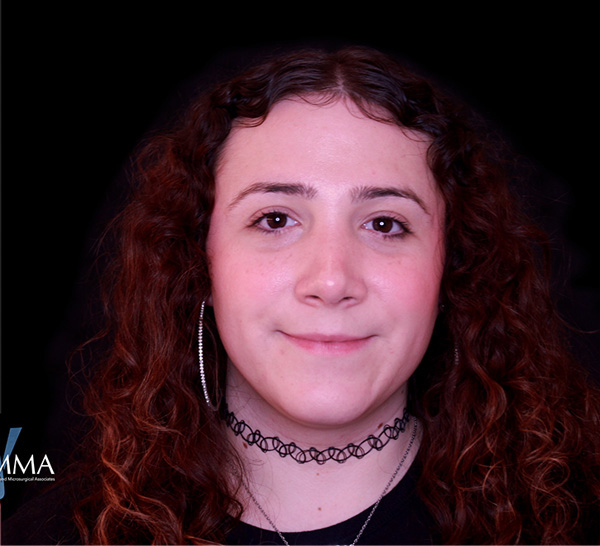What Is Cheek Augmentation?
Cheek augmentation provides increased midface volume and facial balancing for patients undergoing facial feminization. The procedure can be performed using various techniques, including customized implants or facial fat transfer. When executed with precision and artistry by our board-certified plastic surgeons, cheek augmentation gives the face a more heart-shaped, feminized contour.
What Are the Different Types of Cheek Augmentation?
Dr. Marano and Dr. Keith offer several innovative, aesthetic, and permanent solutions for patients seeking a more feminine appearance through cheek augmentation in New York City/New Jersey. There are two main options for cheek augmentation:
- Facial fat transfer: In this approach, Dr. Marano and Dr. Keith extract fat via liposuction from elsewhere on your body, purify the fat cells, and inject them into the midface to enhance cheekbone contour.
- Implants: Implants can be inserted into the cheeks via a hidden, upper intra-oral incision. Implants come in both uniform shapes and sizes, or can be customized in your facial CT scan. If customized, the implants are made to fit your specific anatomy and bone structure to allow for ultimate customization and end result.
Surgical Procedure
Malar augmentation enhances the prominence and contour of the cheekbones to create a more lifted, heart-shaped, and traditionally feminine midface. Depending on the patient’s anatomy and goals, this can be accomplished using solid cheek implants, fat grafting, or a combination of both. The choice of technique is based on facial proportions, soft tissue volume, skin quality, and patient preference.
Cheek Implants:
- This method involves the placement of custom-shaped solid implants, typically made of silicone or porous polyethylene, directly onto the bony cheek prominence (malar eminence).
- The procedure is performed under general anesthesia. Incisions are most often made inside the mouth, above the upper gums, to avoid any external scarring.
- After exposing the malar bone, precisely shaped implants are positioned symmetrically on either side of the face and secured into place, usually with small titanium screws to prevent migration or shifting.
- Once positioned, the incisions are closed with dissolvable sutures, and patients are monitored for swelling and symmetry.
- This approach is ideal for patients seeking more structural projection, especially in cases where the skeletal contour of the midface is flat or underdeveloped.
Fat Grafting:
- In patients with adequate bony projection but volume deficiency or soft tissue deflation, autologous fat grafting can provide a more subtle, natural-looking enhancement.
- Fat is harvested from another area of the body—typically the abdomen or thighs—via liposuction.
- The fat is then processed and purified before being meticulously injected into the malar and submalar areas using microcannulas.
- Fat grafting allows for fine-tuned, layered volume restoration, and has the added benefit of improving skin quality due to the regenerative properties of adipose-derived stem cells.
- While some resorption of the fat is expected, the fat that survives becomes permanent and integrates with the surrounding tissue.
In some cases, malar augmentation is performed alongside other facial feminization procedures, such as brow reduction or rhinoplasty, to create a balanced, cohesive facial aesthetic. For patients with significant midface soft tissue laxity—especially older patients—malar augmentation may also be combined with a midface or facelift to address both volume loss and skin descent.
Who is the Best Candidate for Cheek Augmentation?
The best candidates for cheek augmentation are individuals who have flattened cheekbones who wish to achieve a more defined cheekbone contour and feminized facial shape. The procedure is also ideal for those looking to improve the overall proportions of facial shape and achieve a more feminine facial aesthetic. A patient’s general health, expectations, and surgical goals will be considered during the consultation to determine the suitability for surgery.
How Should I Prepare for Cheek Augmentation?
The first step in FFS is to meet with Dr. Marano or Dr. Keith for a private consultation at GAMMA in New York City or New Jersey. During this time, you will discuss your goals and medical history with our team, who will then create a customized treatment plan according to your unique anatomy, comfort levels, and goals. Prior to consultation, you should ensure the following:
- Provide Mental Health Letter – Many insurance providers and surgical guidelines require a letter from a qualified mental health professional confirming a diagnosis of gender dysphoria and the patient’s readiness for surgery. This letter should follow WPATH (World Professional Association for Transgender Health) standards and address the patient’s understanding of the procedure and its implications. Our team will assist in ensuring the proper language is used and the provider is appropriately credentialed
- Quit Smoking – Nicotine constricts blood vessels and significantly increases the risk of complications, including poor wound healing and tissue loss. Patients must stop using all nicotine products—including cigarettes, vapes, nicotine patches, and gum—at least 4-6 weeks before and after surgery.
- Manage Medications – You may be asked to discontinue certain medications that increase surgical risks.
- Well-Controlled Medical or Mental Health Issues / Medical Clearance – To ensure safe surgery and recovery, patients with underlying medical conditions such as diabetes, high blood pressure, or psychiatric conditions should have them well-managed. Medical clearance from a primary care provider or specialist is required.
- BMI Cutoff – There is no strict BMI cutoff for FFS at GAMMA. Every patient is evaluated individually, considering overall health and surgical goals rather than BMI alone.
- Insurance Coverage – GAMMA works with various insurance providers to help patients access gender-affirming surgery. Our team assists with insurance verification, prior authorization, and necessary documentation. Patients should check with their insurance carrier regarding coverage criteria, including mental health letters and medical clearance requirements.
- Complete Your Consultation – You will undergo a detailed consultation with Dr. Marano or Dr. Keith to ensure your expectations are realistic and your health supports the treatment process. Our team will discuss the risks and benefits, recovery and results, of FFS.
- CT Scan for Virtual Surgical Planning – Ahead of your facial feminization surgery, your surgeon will potentially provide a prescription for a CT scan of your face. This scan is then used during a surgical planning session with your surgeon and a team of biomedical engineers to create customized cutting guides that allow for extreme precision during your surgery.
What is Virtual Surgical Planning (VSP)?
Virtual Surgical Planning (VSP) is an advanced, cutting-edge technology that allows surgeons to plan facial feminization surgeries with extreme precision and accuracy. This process involves creating a 3D reconstruction of the patient’s facial skeleton, which provides a detailed and accurate representation of the bone structure. Using this 3D model, the surgeon can plan the post-operative bony structure and make decisions about the necessary adjustments.
One of the key benefits of VSP is its ability to provide millimeter-level accuracy in surgical planning, ensuring that the changes made to the facial bones are tailored to the patient’s unique anatomy and desired outcomes. The surgeon uses custom 3D-printed cutting guides and plates, which are created specifically for the patient based on the virtual plan. These guides and plates help the surgeon achieve precise cuts during the procedure, reducing the risk of complications and improving the consistency of results.
VSP is particularly beneficial in complex surgeries, such as genioplasty, where the margins for error are minimal. By using this technology, the surgeon can optimize the approach, anticipate potential issues, and achieve the most aesthetically pleasing and functional outcomes for the patient.
What to Expect On the Day of Surgery
On the day of surgery, you will be given general anesthesia to ensure comfort throughout the procedure. Cheek augmentation is typically done in conjunction with other FFS procedures. The length of the surgery will depend on what other procedures you are undergoing that day. Once the procedure is complete, you will be closely monitored in a recovery room before being discharged.
Cheek Augmentation recovery
Recovery times can vary from patient to patient depending on your unique healing abilities, the specific techniques utilized by Dr. Marano and Dr. Keith, and whether any other treatments are performed at the same time. Recovery from cheek augmentation typically involves a 1-2 night hospital stay if combined with other facial feminization surgeries. Patients can expect to experience some swelling, bruising, and mild discomfort, especially during the first week.
- Activity Restrictions: For 2 to 4 weeks, patients should avoid strenuous activities, including exercise and heavy lifting, to prevent complications.
- Soft Food Diet: As there will be several incisions intra-orally, patients are required to maintain a soft food diet for 2 weeks following surgery. Your surgeon will provide you a list of foods that are acceptable during your hospital stay and while recovering at home.
- Return to Work: Most patients can return to work after 4 weeks, though it may take longer for complete healing.
- Swelling and Final Results: While swelling and bruising will subside in the first few weeks, final results may take 12-18 months as the jaw fully heals and the new jawline settles into place.
Why choose us for a Cheek Augmentation?
Our team at Gender Affirming Medical and Microsurgical Associates (GAMMA) in New York City and New Jersey is known for providing the highest-level care in an affirming environment. We utilize today’s most progressive and cutting-edge techniques to provide the highest level of service possible. Our goal is to help transgender, nonbinary, and gender nonconforming individuals achieve their unique appearance goals and thrive with confidence, security, and peace of mind.
Dr. Drew Marano
Dr. Drew Marano is a fellowship-trained plastic and reconstructive surgeon who excels in the complex art of gender affirmation surgery. After he graduated at the top of his class with honors from Rutgers New Jersey Medical School, Dr. Marano pursued a demanding six-year Integrated Plastic and Reconstructive Surgery Residency at Columbia University/Cornell University in New York City. He then continued to refine his skills in gender affirmation surgery as the first-ever Harvard University Complex Gender and Microsurgery Fellow, undergoing in-depth training in groundbreaking techniques. Dr. Marano is a prolific author and lecturer who has contributed to over 40 publications and presentations at regional and national meetings. He is proud to provide his transgender, nonbinary, and gender non-conforming patients with the support and encouragement they need as they navigate the exciting journey of transitioning.
Dr. Jonathan Keith
Dr. Jonathan Keith is a fellowship-trained and board-certified plastic surgeon known for his consummate skill in the evolving field of microvascular surgery. He is a member of the World Professional Association for Transgender Health and is the founder of the Rutgers Center for Transgender Health. In 2018, Dr. Keith created the first multidisciplinary clinical program for transgender patients in New Jersey and was the first provider in the state to perform a female-to-male phalloplasty for gender confirmation. Dr. Keith is also a prolific author who regularly contributes to leading medical journals, publications, and scientific literature. He completed a competitive seven-year residency at the University of Pittsburgh, one of the country’s most lauded plastic surgery training programs. In 2012, Dr. Keith was chosen for the Stephen S. Kroll Fellowship in microsurgery at the University Hospital of Gent, Belgium. Today, Dr. Keith delivers nuanced and natural-looking results for his transgender, nonbinary, and gender non-conforming patients. He is one of the most accomplished and sought-after surgeons in the region, and he performs DIEP flap surgery for breast reconstruction, vaginoplasty, and phalloplasty.
Insurance Considerations & Requirements
Insurance carriers will typically cover gender affirmation surgery, including facial feminization surgery, when it is performed to treat gender dysphoria, a condition in which the patient’s outer traits do not reflect their authentic gender identity. You’ll need a letter from a mental health provider detailing your decision to undergo FFS. Our team can go over the insurance requirements in greater detail during your consultation.
Traveling from Outside the NYC Area
- Resources – For patients traveling to NYC for surgery, GAMMA provides recommendations for LGBTQ+ friendly accommodations, post-op caregivers, and recovery services. Our team can also assist with logistics such as medical transport and aftercare arrangements.
- Requirements – Out-of-town patients must plan to stay in NYC for at least two weeks after surgery to ensure proper healing and attend necessary post-operative appointments. We encourage having a trusted friend, family member, or professional caregiver for the first few days post-surgery.
Risks and Complications
As with any facial surgery, malar augmentation carries potential risks. While complications are relatively uncommon when performed by an experienced surgeon, patients should be informed of the following:
For Cheek Implants:
- Asymmetry – Slight differences in implant position or postoperative swelling can result in uneven cheek projection. Precision in placement and, when needed, intraoperative measurements help minimize this risk.
- Implant displacement or migration – Though rare, implants can shift from their original position. Fixation with titanium screws significantly reduces this likelihood.
- Infection – Any implanted material carries a small risk of infection. If this occurs, antibiotics are administered, and in rare cases, implant removal may be necessary.
- Oral complications – Since incisions are made inside the mouth, there is a small risk of irritation, prolonged swelling, or numbness along the upper lip or gums.
For Fat Grafting:
- Fat resorption – A portion of the transferred fat is naturally reabsorbed by the body. Overcorrection may be used to account for this, and touch-up procedures can be performed if needed.
- Fat necrosis or cyst formation – Rarely, small nodules can form if fat does not integrate properly. These are typically benign and may resolve over time or be removed if persistent.
- Contour irregularities – Uneven fat distribution may result in subtle lumps or asymmetries, which can often be addressed with secondary grafting.
General Risks (Applicable to Both Methods):
- Hematoma or seroma – Fluid or blood accumulation may occur in the surgical site and may require drainage.
- Prolonged swelling or bruising – Especially common in the midface, this typically resolves within a few weeks but may persist longer in some individuals.
- Nerve injury – Temporary numbness or tingling in the cheeks or upper lip is not uncommon and typically resolves over time. Permanent sensory changes are rare.
As always, risks are carefully minimized through meticulous surgical technique, careful preoperative planning, and close postoperative follow-up. Patients are counseled in detail during consultation and provided with comprehensive aftercare instructions to support a smooth and successful recovery.
